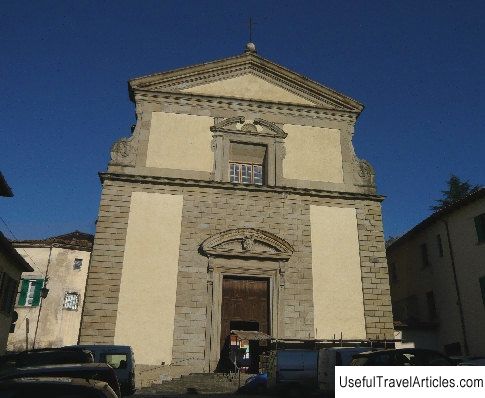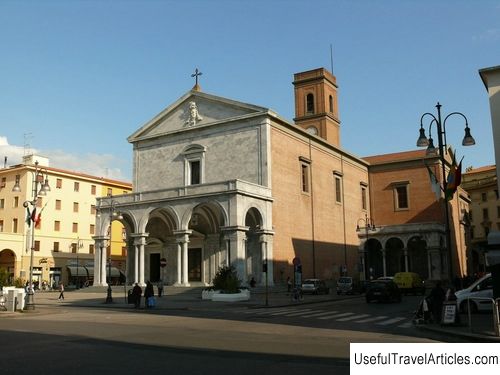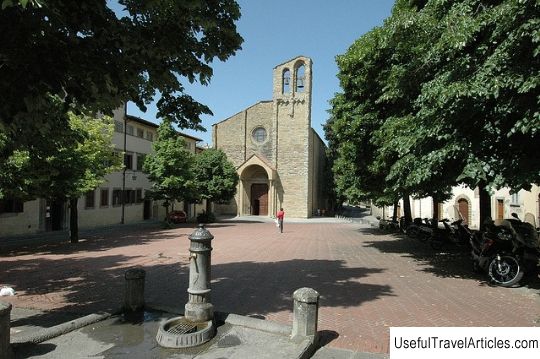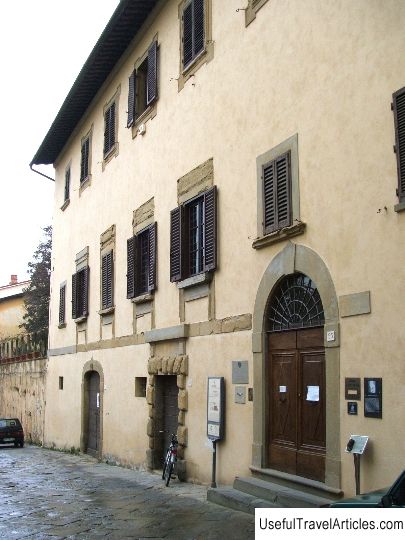Piazza Grande description and photos - Italy: Arezzo
Rating: 8,5/10 (2902 votes) 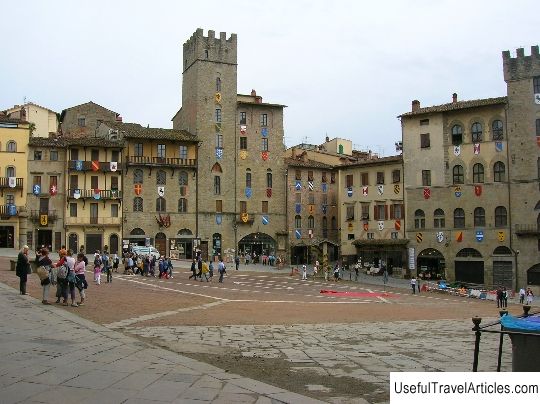
Piazza Grande description and photos - Italy: Arezzo. Detailed information about the attraction. Description, photographs and a map showing the nearest significant objects. The title in English is Piazza Grande. Photo and descriptionPiazza Grande, also known as Piazza Vasari, is the main square in the Tuscan city of Arezzo. For centuries, it was the center of social life: in the Middle Ages, the square was called Piazza del Comune, as it housed the building of the City Hall, and in the 16th century it became known as Piazza Vasari because of the imposing Loggia built on the north side of the square along the project of the famous artist and architect of the time Giorgio Vasari. Archaeological finds indicate that in the 3rd century BC. an Etruscan road passed through this place, which connected the "city of the living" with the "city of the dead", located on the small hill of Poggio del Sole. Later, an ancient Roman road was built here. In the Middle Ages, Piazza Grande was a huge market, in the northern part of which there was a bird market, which is why the square was sometimes called Piazza dei Mayali (Pig Square). Since the 11th century, Piazza Grande has become the center of Arezzo's political, commercial, military and religious life. In those days, the square looked almost the same as it does today, with the exception of its northern part, where you can now see the City Hall building with its red brick tower on the right and the Palazzo del Capitano on the left. In the 17-18th centuries, the square underwent significant changes: all medieval buildings were plastered, towers and Gothic decorative elements disappeared, a fountain and the Court Palace were built. Gradually, the market trade in the square was streamlined, and today in Piazza Grande you can no longer see the market at all. And the square itself has ceased to be the center of city life, except for the days of the Joestra del Saracino knightly tournament, when a motley crowd gathers here again. In the western part of Piazza Grande you can see the apse of the Church of Santa Maria della Pieve, as well as the facade decorated with a series of loggias. Unfortunately, the apse was poorly restored in 1864-78 and is significantly different from its original Romanesque appearance. Another notable building on the square is the Fraternita dei Laici building, now part of the Palace of the Court. It was built at the end of the 14th century for the religious Brotherhood of St. Mary, founded in 1262. The brotherhood began with the fact that its members went around Arezzo twice a week asking for alms, and already in the Renaissance it became a wealthy and powerful city institution - the brotherhood had its own schools. and it even sponsored the training of some students at the University of Pisa and abroad. The brotherhood also financed the construction of the Vasari Loggia, the city churchyard, the city water supply system and a shelter. The construction of the Fraternita dei Laici building began in 1375 and was completed only two centuries later. Such a long period was reflected in the fact that different styles - Gothic, Renaissance and late Renaissance - were mixed in the external appearance of the building. In 1552, Felice da Fossato built a clock on the top of the Fraternite, which today is one of the oldest working clocks in Italy. According to legend, da Fossato was blinded after he built a clock so that he could no longer create anything similar. In the 18th century, between the apse of Santa Maria della Pieve and the Fraternita dei Laici building, the Palace of the Souda was built - perhaps Arezzo's only baroque building. Palazzo Lappoli, a medieval building from the 14th century with a lovely wooden balcony and tower, stands a little to the side. It is believed that the tower was built a century later and generally belonged to another building to the left. In the 18th century, the Palazzo and tower were plastered and an iron balcony was added to the palace. Another noteworthy building on Piazza Grande is the elegant Palazzo Bridzolari, built in the 15th century for the wealthy Kofani merchant family ... Nearby stands the Torre dei Cofani tower. But, of course, the "pearl" of the square is the Loggia Vasari - one of the most beautiful buildings in Arezzo. It was designed by Giorgio Vasari and is considered his masterpiece. Work on the construction of the Loggia began in 1573 and ended after the death of the architect in the 17th century. The building got its name "Loggia" for a large open gallery, which once housed the best shops of the city. In the northern part of the square, in front of the Loggia, stands Petrone - a stone column with a ball and a cross at the top. This is a replica of the original 13th century pillar that served to expose criminals and debtors. And in the lower part of Piazza Grande you can see the fountain, built according to the project of Vasari in 1602.       We also recommend reading Villa Trissino description and photos - Italy: Vicenza Topic: Piazza Grande description and photos - Italy: Arezzo. |
